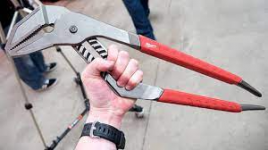Birdhunter
Member
- Joined
- Jun 16, 2012
- Messages
- 4,144
I had to extract two 12mm by 140mm tenons from a big block of wood. I had forgotten to sand the tenons to act as trial fit ups so they were in incredibly tight. They were 1/2 in the tight mortise.
Pulling on them didn’t budge them a bit.
I ended up using big pliers to grip the tenon and a 1” dowel section as a fulcrum. The pliers were the lever. It took about 5 goes to get the darn tenon out with each go yielding maybe 5mm.
This taught me a lesson.
Pulling on them didn’t budge them a bit.
I ended up using big pliers to grip the tenon and a 1” dowel section as a fulcrum. The pliers were the lever. It took about 5 goes to get the darn tenon out with each go yielding maybe 5mm.
This taught me a lesson.

